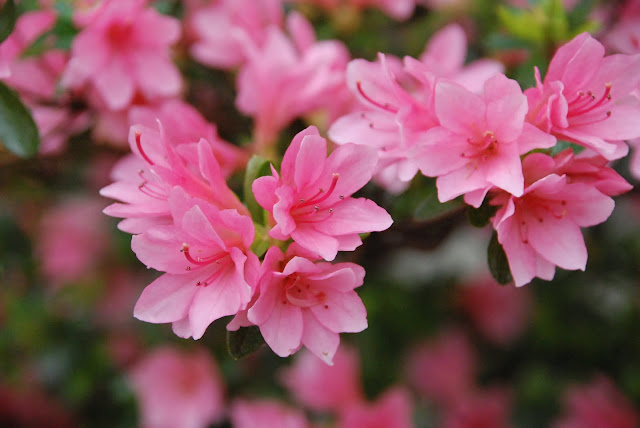Pectin gives jellies and jams structure so they don't run all over the place. I don't mind the structure and I actually prefer it, but I do mind the preservatives that many of the packaged pectins seem to have not to mention the price. This year I decided to make my own pectin. Lo and behold, I am not the only one to ever think of it. Guess what? This is how they used to do it before you could buy it in a box or a tube! Imagine that!
You need a bunch of green, unripened apples. When I say green apples I don't mean Granny Smith apples, I mean apple that are not ripe yet regardless of what color they will turn when they are ripe. It turns out green unripened apples are very high in natural pectin. I was able to get my apples from an old tree where I work that almost nobody even realizes is there. If you don't have your own orchard or know someone that does, chances are you can find an apple tree somewhere nearby that is in need of attention. And since it is early in the season when these apple are harvested, they are still in pretty good shape before the insects get hold of them later in the summer.

The trick is to get the pectin concentrated and in a form you can add to your jelly and jam recipes. I washed the apples good, chopped them up in my food processor and cooked them down in the biggest pot I have. Drained the liquid off and canned it for later use. The process I used is located
here. I have also reproduced the text found at this link below in case the original is ever deleted.
*******************************************************************
HOMEMADE PECTIN STOCK
From Harriet Fasenfest, Co-owner, Preserve
1. Put 3-4 pounds chopped apples in a non-reactive pan. Add enough water to barely cover apples and bring to a boil. Lower temperature immediately and let simmer until soft, approximately 20-30 minutes.
2. Pour apples and liquid through a fine sieve into a second pot. Without stirring, let this liquid drain overnight.
3. Bring liquid to a boil and cook until it has reduced to half its original volume.
4. Test pectin content (see instructions below) and continue to cook if necessary.
5. Once liquid pectin reaches the desired strength, store it in the fridge or freezer.
Testing the Pectin Level
I admit to loving this part. To determine the amount of pectin in your liquid, put 1 teaspoon of the liquid on a plate and add 2 tablespoons of rubbing alcohol to the mix. Swirl the mixture around until clots start to form. It will amaze you, but it will happen: You will know the strength of the pectin by the size of the clots.
You want a fairly large viscous clot to indicate strong pectin. Weak pectin will show up as several small, scattered clumps. If that is the case, bring the liquid back to a boil and reduce further. And toss out the test batch-you don't want to return that to the pot. Once the pectin reaches the desired strength, refrigerate, freeze, or can it until you make jam. It will keep in the fridge for up to one week.
Using Homemade Pectin
As a general guide, 2/3 cup of liquid pectin is enough to set 4 cups of low-pectin prepared fruit or fruit juice. Here again, you have room for whimsy. If you use strawberries (low in pectin) alone, use the full amount of liquid pectin. If you throw in a few currants (high in pectin) with the strawberries, use less liquid pectin. If you use half currants and half strawberries, you might not need any liquid pectin at all.
In the end, willingness to learn by trial and error and to love whatever the outcome is what will win the day.
Posted by Deborah Kane on March 2, 2007 11:55 AM
Permalink
*******************************************************************
TTFN
B





























